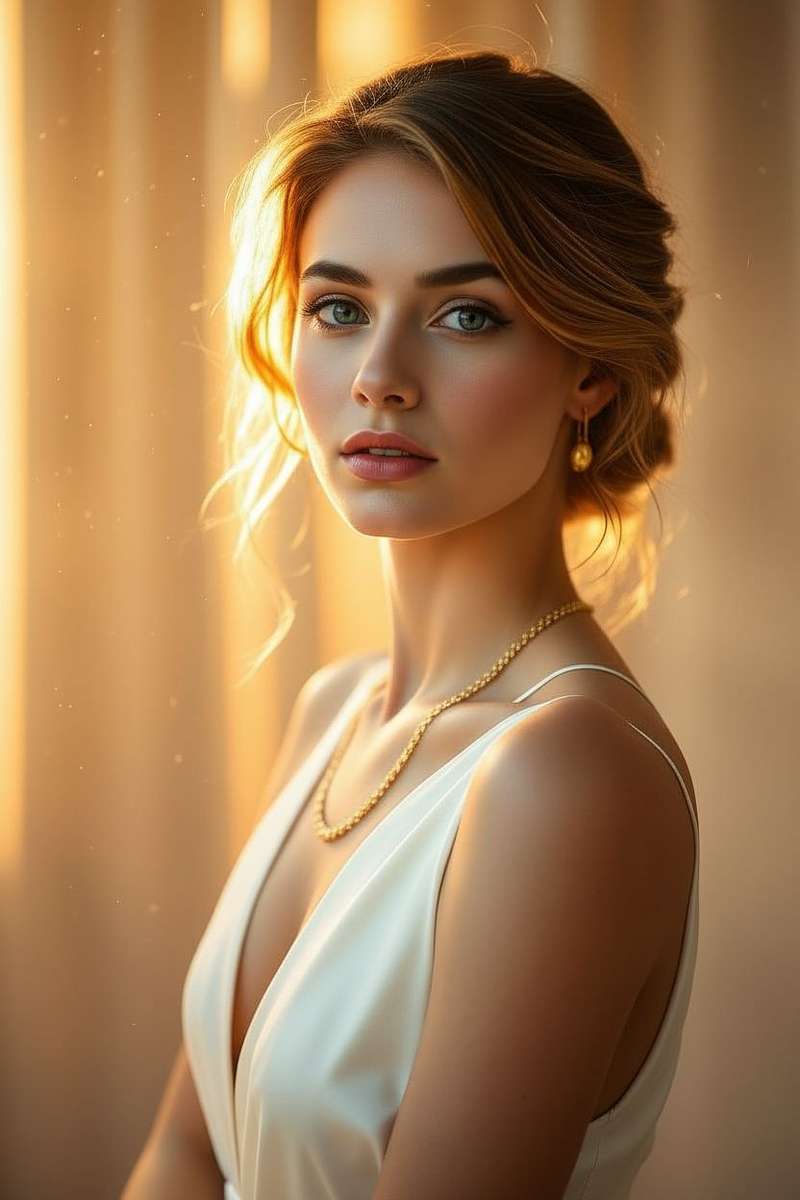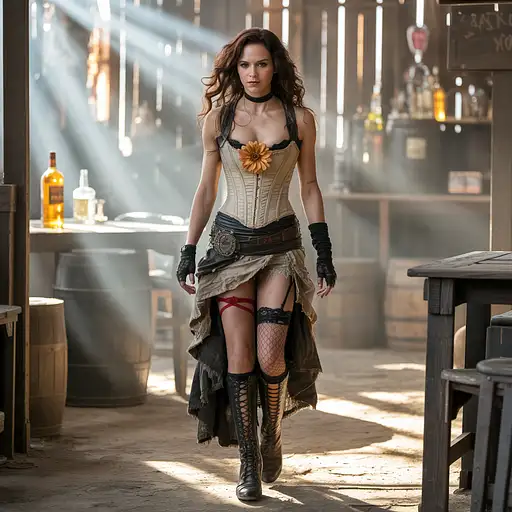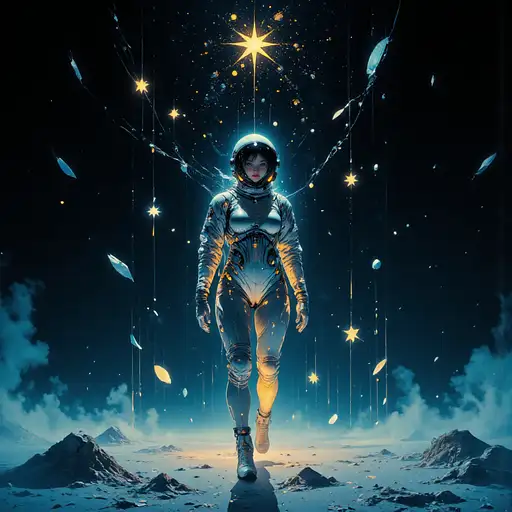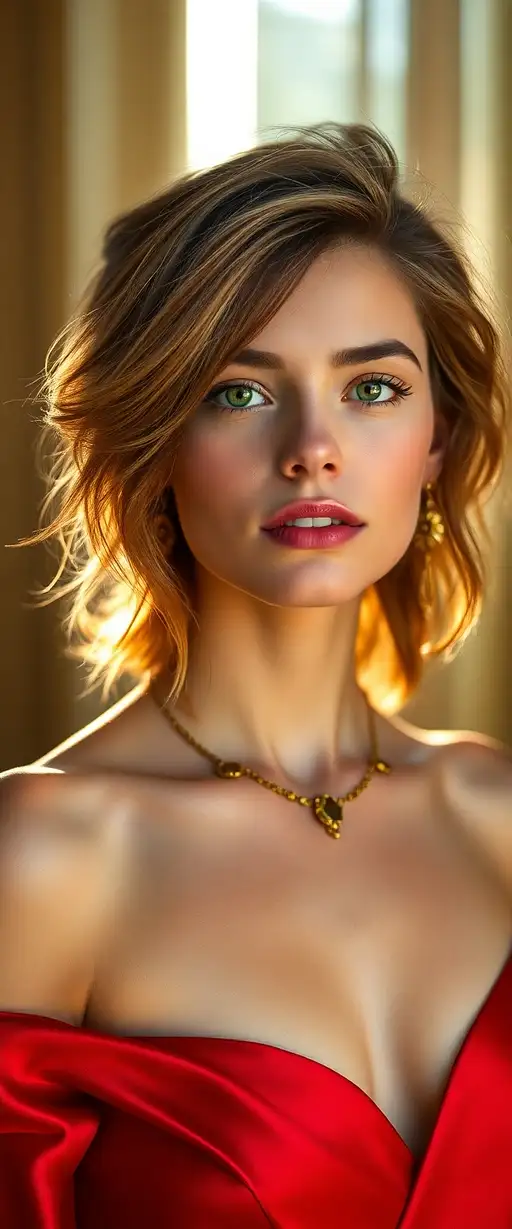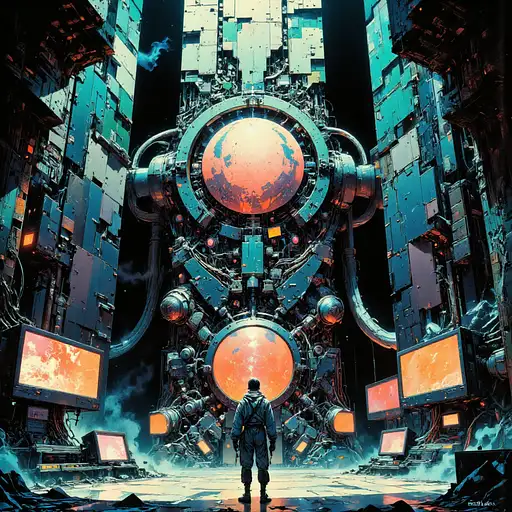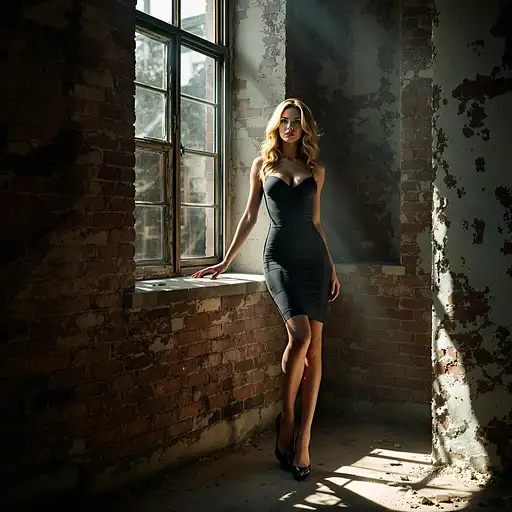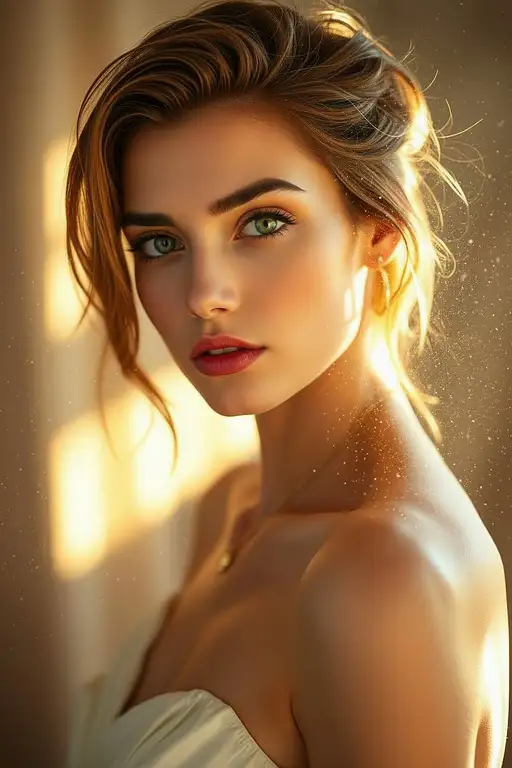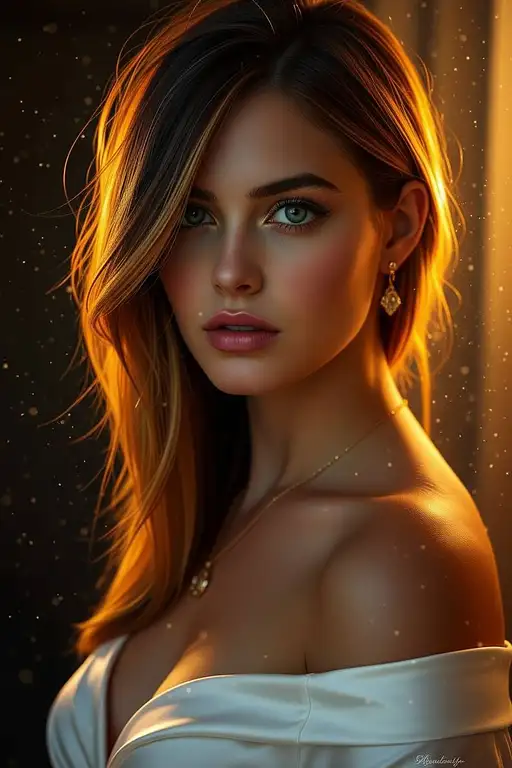
9 months ago
Wide-angle cinematic photograph, shot with a 24mm lens and infinite depth of field (2.0), ensuring sharp focus on every element (2.0). A beautiful young woman sits casually by the back wheel of a Ferrari F40 (1.8), leaning against the car with one knee bent (1.7). She wears high-waisted jeans and a fitted white tank top (1.8). Her face is vividly detailed with natural skin texture, subtle highlights, and lifelike imperfections (2.0). Her wavy hair flows slightly in the summer night breeze, catching faint highlights from the car’s lights and starlight (1.9). The Ferrari F40 is viewed from a three-quarter angle (2.0), showcasing its low-slung wedge shape, iconic pop-up headlights, aggressive air intakes, and slatted rear vents (2.0). The glossy deep Ferrari red paint reflects subtle glimmers from the night sky (2.0), with faint smudges and scratches adding realism to its polished surface (2.0). The headlights emit sharp, volumetric beams that cut through a thin, misty ground haze (2.0), while the warm red taillights cast soft glows, reflecting faintly off the slightly dewy asphalt (2.0). Tiny details, like condensation forming around the taillights (1.8) and star reflections in the car's paint (1.8), enhance the realism. The night sky is dark and dramatic, rendered in deep indigo and black, avoiding oversaturated tones (2.0). It is filled with countless vivid stars, each sharp and distinct, with the glowing Milky Way stretching prominently across the horizon (2.0). Subtle celestial gradients and faint nebulae add depth and atmosphere (1.9). The ground haze interacts dynamically with the car’s beams (1.8), creating cinematic depth without obscuring the details. The composition is rich with blink-and-you-miss-it details (1.9): fine strands of the woman’s hair catching the light, faint dust particles floating in the haze illuminated by the beams (1.8), and tiny scratches on the Ferrari’s polished surface (2.0). The balance of cool ambient tones from the sky and warm, dramatic lighting from the car creates a high-contrast aesthetic (2.0). Everything—from the woman’s face to the car and the vivid starry sky—is rendered with razor-sharp clarity (2.0), achieving a professional, high-end photographic quality.
